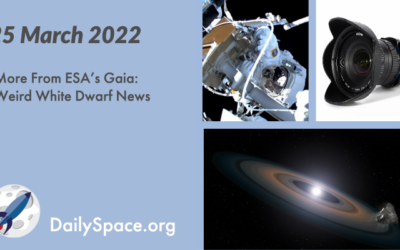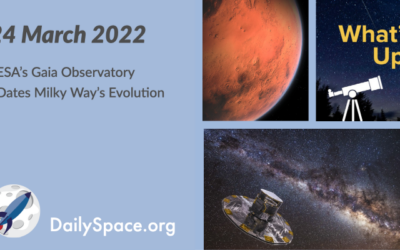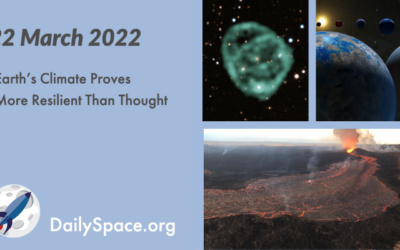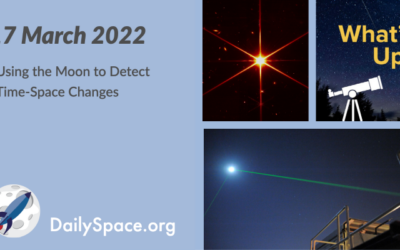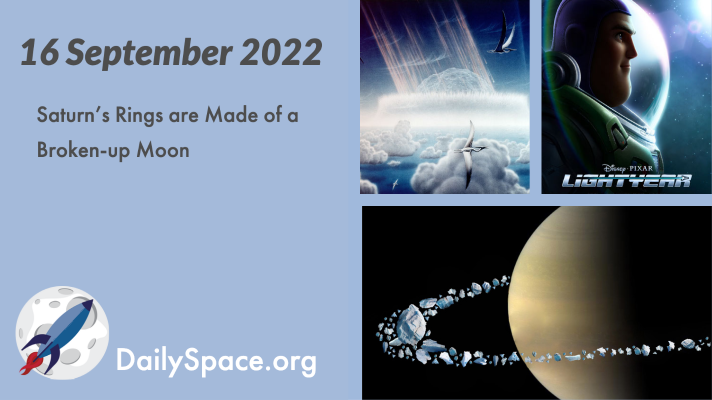
Saturn’s Rings are Made of a Broken-up Moon
Using computer simulations, researchers have pieced together a possible scenario where Titan caused another of Saturn’s moons to break up and become the beautiful ring system we see today. Plus, organic molecules on Mars, the death of the dinosaurs, and a review of Lightyear on Disney+.
Catch us on NowMedia TV
Saturday 11pm Central / midnight Eastern
Sunday 10pm Central / 11pm Eastern
Watch live on these stations: Houston 21.10, Atlanta 22.10
or tune-in on Apple TV, Roku, YouTube Live, or Amazon Prime
More From ESA’s Gaia: Weird White Dwarf News
Researchers use data from ESA’s Gaia telescope to discover that white dwarf stars have two different distributions both in how they move and how bright they shine. Plus, all the International Space Station news, simulated JWST observations, and a review of a macro lens from Venus Optics.
ESA’s Gaia Observatory Dates Milky Way’s Evolution
Stellar formation and evolution data collected from ESA’s Gaia telescope has allowed scientists to create a timeline of the evolution of our own galaxy, the Milky Way. Plus, an ancient ice age, sound on Mars, a new exoplanet, and What’s Up.
Rubble Pile Asteroids May Be Extinct Comets
After detecting high levels of organic matter using remote sensors at the asteroid Ryugu, numerical models show that it’s possible that rubble pile asteroids are actually extinct comets. Plus, the Cosmic Optical Background, Enceladus’s tiger stripes, and this week in rocket history, we look back at STS-45.
Earth’s Climate Proves More Resilient Than Thought
Computer models of the effects of an eruption event similar to the Columbia River Flood Basalt show that, despite massive injections of sulfur dioxide into the atmosphere, Earth’s climate rebounded much more quickly than expected. Plus, ORCs, lunar swirls, exoplanets, and diamonds.
Long-Awaited Rollout of the First Space Launch System
The first SLS was rolled out of the Vehicle Assembly Building (VAB) High Bay 3 on the Crawler Transporter on March 17, 2022, and is the first lunar rocket to emerge from the VAB since Apollo 17’s Saturn V in 1972. Plus, an asteroid impact, climate change, ancient volcanoes, spring on Mars, and a new Deep Sky Network dish.
Using the Moon to Detect Time-Space Changes
Scientists propose using changes in the distance from the Earth to the Moon and measured by lasers as a way to detect the phenomenon of gravitational waves. Plus, JWST is working, ExoMars is at risk, and in this week’s What’s Up, we learn about looking for zodiacal light.


 We record most shows live, on Twitch. Follow us today to get alerts when we go live.
We record most shows live, on Twitch. Follow us today to get alerts when we go live.

